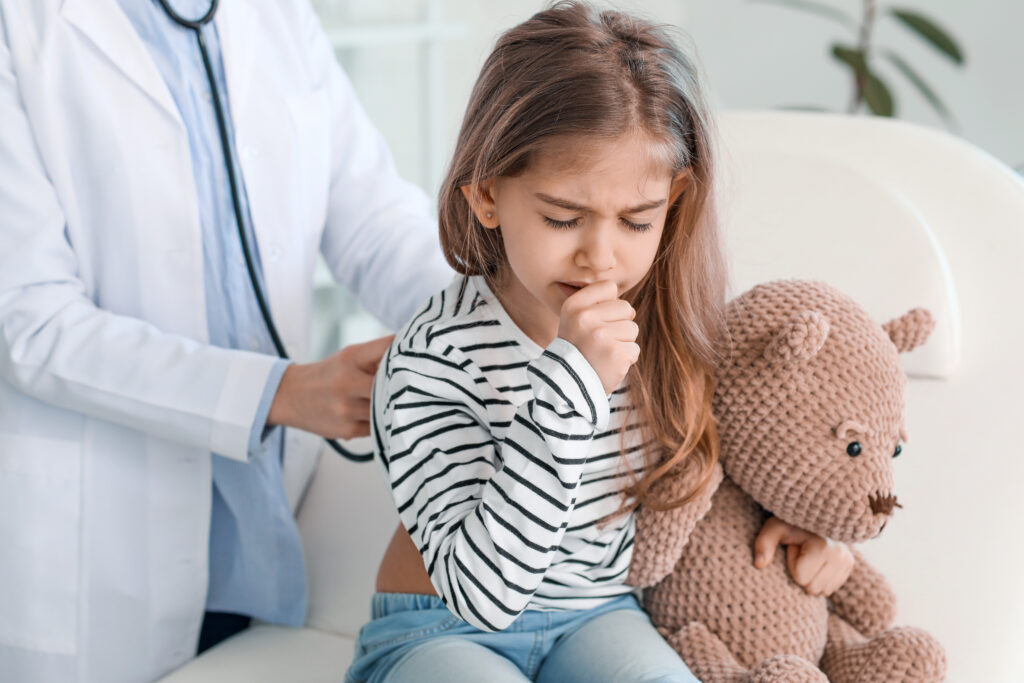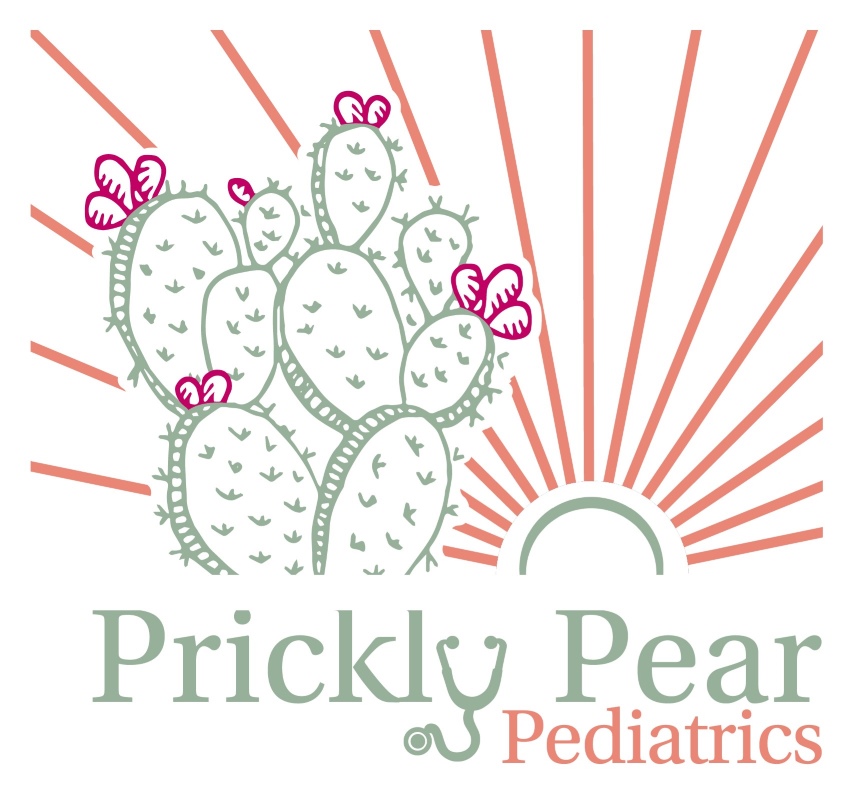Mycoplasma Pneumonia in Kids

This summer, we’ve had an unusually large number of cases of pneumonia in kids. In a normal year, I may diagnose five or six kids a year with pneumonia. In the last few weeks, I have diagnosed five or six cases per week! There are multiple potential causes of pneumonia in kids. Currently, a bacteria called Mycoplasma pneumoniae seems to be responsible for a majority of the cases. Fortunately, the vast majority of kids who develop mycoplasma pneumonia have overall mild symptoms and recover at home with the help of antibiotics. Here are some things to know about this type of pneumonia in kids:
What is Mycoplasma Pneumonia?
Pneumonia is defined as inflammation and infection in the lung tissue itself. There are multiple different organisms (bacteria, viruses, fungus, etc.) that can cause pneumonia. Mycoplasma pneumoniae is a type of bacteria that attaches to the lining of the respiratory tract to cause infection. It is most common in elementary school aged children and in young adults. It tends to circulate more in the summer and early fall months. There is no vaccine to prevent this type of pneumonia.
What are the Signs and Symptoms?
Kids of any age can develop mycoplasma pneumonia. The symptoms range from very mild to severe. A small number of kids who have this type of pneumonia require hospitalization. However, the majority of cases are mild and can be treated at home. Most commonly, kids will complain of sore throat, fatigue, and develop a fever (usually low grade). Left untreated, these symptoms can last for one to two weeks.
Cough can start around the same time as the other symptoms, or can start a day or two later. The cough typically starts “dry” (not coughing up mucous) and then can become more “wet” sounding (increased mucous). The cough itself can last for four to six weeks. Kids sometimes have wheezing with the pneumonia. Abdominal pain, vomiting, and diarrhea possible as well. Mycoplasma pneumonia can also cause a rash on the skin, or an ear infection, and in rare cases, could cause neurologic symptoms.
How is it Diagnosed?
For kids who are not sick enough to be hospitalized, we diagnose this clinically. This means that we look at the child’s symptoms, history of exposure, physical exam findings to guide the diagnosis. For children who are sick enough to require hospitalization, there is a test that can be performed by a nose or throat swab. Depending on how a child’s lungs sound, we may decide to order a chest x-ray to get a look at the lungs. Most of the time, we do not need to do any testing and will just go ahead and start treatment.
What about “Walking Pneumonia?”
“Walking Pneumonia” is not an official term, but some people use it to describe a mild case of pneumonia. When someone has “walking pneumonia” they have mild symptoms that overall do not affect their ability to continue with every day life. Which is where the name comes from, as they can still walk around and function decently. Mycoplasma is one of the most common causes of the mild “walking pneumonia.”
How Do You Treat Mycoplasma Pneumonia?
For otherwise healthy kids who do not have a contraindication to the medicine, we can treat mycoplasma pneumonia with an antibiotic called Azithromycin. It comes in both pill and liquid forms and is a five day course of medication. As with other illnesses, allowing children to rest and stay well hydrated will help their immune system do its job better. For kids over one year old, you can give honey mixed with lemon juice (straight or mixed in a warm tea) to help to soothe their cough and throat.
If the pneumonia has caused a child to have wheezing, there is a medicine that can be breathed in by an inhaler or breathing treatment called albuterol that can help. If a child is sick enough to need to be hospitalized with this type of pneumonia, there are some other antibiotic options that we may try. Sometimes pneumonia can cause lower oxygen saturations and in that case, we can provide supplemental oxygen. For children that are dehydration, we can also give IV fluids.
What Do We Watch Out for at Home?
As I mentioned before, most kids who develop mycoplasma pneumonia do not need to be hospitalized. Signs of respiratory distress to watch for: fast, hard breathing, sucking in under the ribs, head bobbing up and down to breathe, or bluish discoloration of the lips/mouth. If your child has any of these symptoms, you should take them to the ER (or call 911 depending on the urgency). If they are unable to keep down fluids, have less urine output, dry lips, or are lethargic (can’t stay awake/hard to arouse), then they also need to go to the ER.
Is it Contagious?
Mycoplasma pneumonia is contagious. It spreads through infected respiratory particles (ex: coughing or sneezing right next to someone). The lag time between exposure and developing symptoms is an average of 23 days, but can be anywhere from one to four weeks. It has a high household spread rate as well (up to 90%). We do not know with certainty how long each person is contagious, but an estimated average is ten days. For people who start antibiotics, contagiousness should decrease significantly after 48 hours on the medicine.
How Can We Prevent Mycoplasma Pneumonia?
There is no vaccine available to help prevent mycoplasma pneumonia, however, there are other measures that you can take. If you are around a symptomatic person, wash your hands often with soap and water and avoid touching your face. Wearing a mask around an infected person decreases your chances of becoming infected with the bacteria. If you have symptoms, cover your mouth and nose when you cough and sneeze and consider wearing a mask to limit respiratory particle spread.
Resources:
https://www.cdc.gov/mycoplasma/about/index.html
